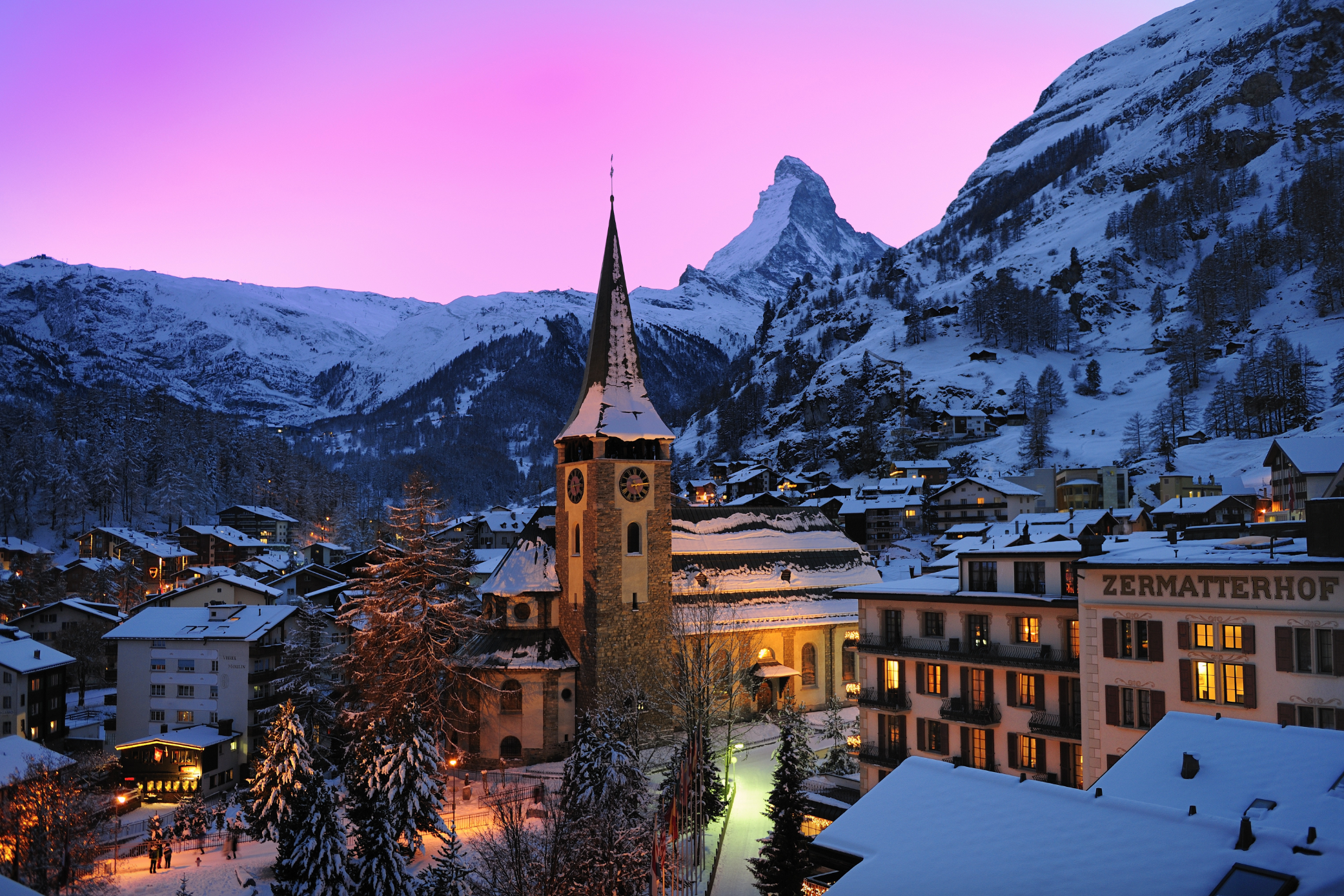Battle of the ski resorts: Zermatt


Ease of access from the UK 4/10
From Zurich, Basel or Geneva airport, it’s an easy enough journey by train. But it takes ages – almost four hours from each. And it’s pricey. Driving isn’t much better: it’s at least 10 hours non-stop from Calais and as Zermatt is car-free you pay to park 5km away in Tasch and take a train the last stretch.
Sense of scale and epicness 10/10
Tourists travel half-way round the world to swoon over the world’s most recognisable mountain. But even if you put aside the mighty Matterhorn, the scenery here is a big deal. Glaciers tumble from the Monte Rosa; 38 4000m-plus peaks crowd the skyline; views stretch to France and Italy. With three top stations above 3000m, and Zermatt town at 1620m, runs are correspondingly epic.
Variety and quality of the pistes 7/10
The 200km of runs across its three linked mountains offer excellent variety and you can reach another 150km by popping over to the linked resorts of Cervinia and Valtournenche in Italy. But Zermatt’s trump card is snow. No matter how shocking a season everyone else is having, its pistes always seem to be in great nick thanks to altitude and snow-making. Two points deducted for crowding.
Off-piste potential 8/10
We’re baffled at how few skiers go off-piste here. Our favourite marked itinerary runs (avalanche controlled but not patrolled) are on Stockhorn/Triftji (open from February), an ungroomed sector with powder lines and moguls galore. There’s deserted hike-to terrain off the back of the Stockhorn, and beyond the Klein Matterhorn to classic descents such as Schwarztor. Feeling flush? A heli trip up the Monte Rosa offers a magnificent run from 4250m among seracs and crevasses, calling at the modern Monte Rosa hut.
Lapability 9/10
Many of Zermatt’s runs are seriously long: try doing Klein Matterhorn to Zermatt or Cervinia in one… It’s satisfying to travel from one end of the area to the other. But we’ve also had fun sticking to one sector and lapping, say, the Furggsattel chair, doing the moguls under the pylons then attempting the snowpark. The National, a quiet, steep black in the trees on Sunnegga, makes for a heart-pumping circuit, especially if viz is bad, and if the Stockhorn moguls or powder are in condition you could lap the same lifts and ski different lines there all day.
On-hill grub 8/10
Zermatt’s 56 mountain restaurants come with a high reputation… and high prices (sometimes a tenner for a soup). There’s no doubting the quality of food, and it would be a shame to ski here without visiting some of the ‘nice’ ones – like Zum See down in the woods. There are some cheaper self-service stops too. And if you ski to Italy, eat there: I like the rustic agriturismo La Pera Doussa (Valtournenche) – half the price
of Zermatt.
Après scene 7/10
Après-ski is low-key. However, there are a few reliably rowdy places, such as the Hennu Stall, on the lower mountain, and Papperla Pub, in town. Later on, the Post hotel is the hub of the action. It’s also fun to tour some hotel bars or go to the Vernissage cinema.
Base 7/10
Zermatt is at the head of a valley and apart from its link with Cervinia and Valtournenche, there are no lift links elsewhere. However, you could take a rucksack and some Euros to spend a few nights in either of these Italian resorts then return; or travel on to the Monterosa resorts (Champoluc, Gressoney, Alagna). In spring Zermatt becomes a hub for ski touring, surrounded as it is by peaks and glaciers. It’s famous for being the end of the Haute Route.
Family 4/10
There are better places to start off: the beginner areas are up the mountain and there’s no ski-in ski-out accommodation. But the lift pass (adult price £275) is free until they’re nine and half price until they’re 16, and there are nine ski schools, two British-run.
zermatt.chhttp://zermatt.ch
TOTAL: 64
RANK: Joint 12th